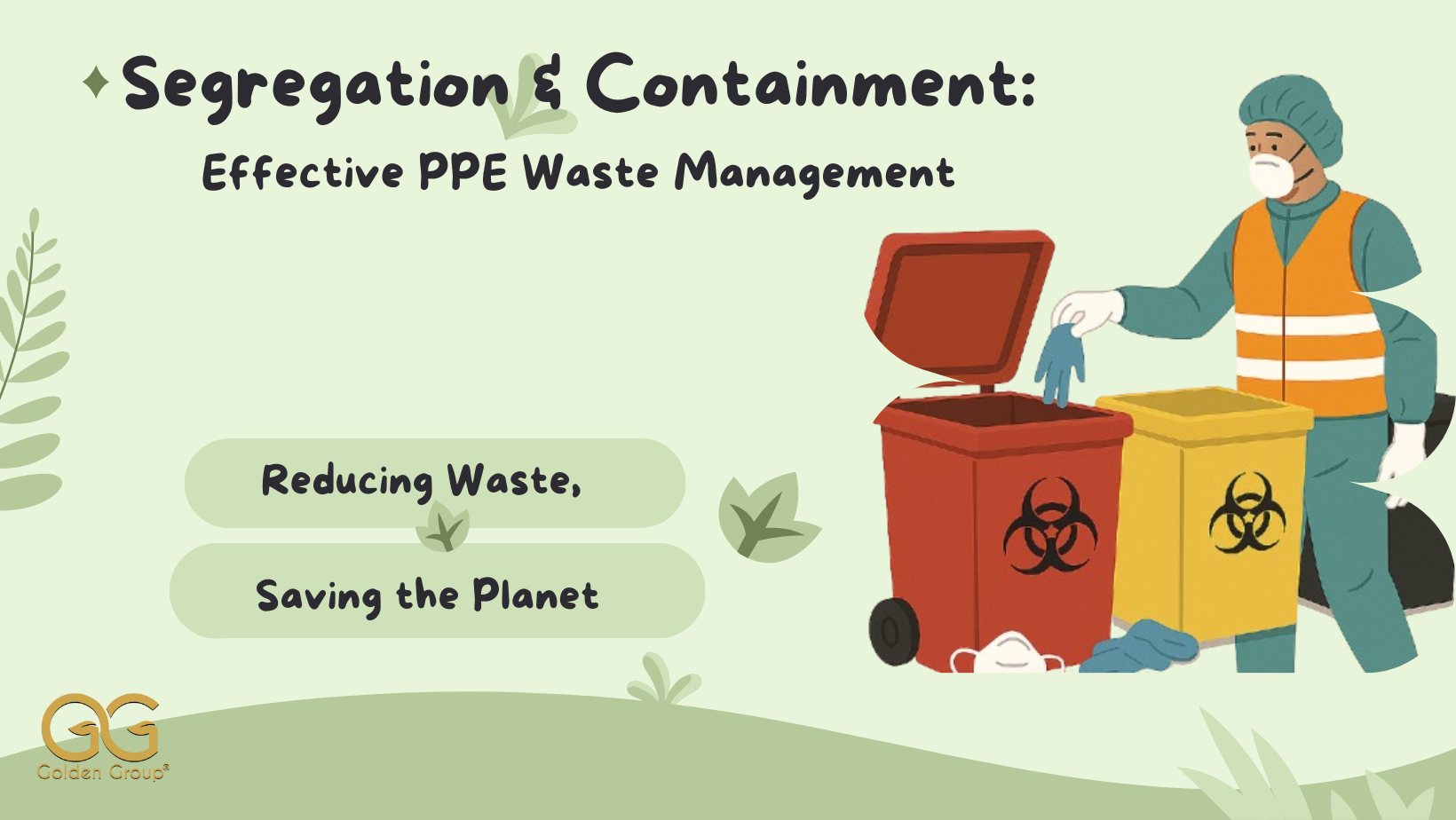
The widespread use of personal protective equipment (PPE) in healthcare, industrial, and everyday settings has highlighted the urgent need for proper waste management practices. From gloves and masks to gowns and face shields, PPE plays a crucial role in protecting individuals from harm—but once used, it can pose significant risks if not disposed of correctly.
Effective PPE waste management relies on two critical pillars: segregation and containment. These steps help safeguard public health, ensure regulatory compliance, and promote environmental responsibility.
The Rising Challenge of PPE Waste
The COVID-19 pandemic drastically increased global PPE consumption. According to the World Health Organization, tens of thousands of tonnes of PPE-related waste—largely disposable items—have been generated, much of it ending up in landfills or discarded improperly in public areas. This surge in waste underscores the importance of robust disposal systems that minimize infection risk, reduce environmental impact, and improve sustainability efforts.
Step 1: Segregation – Sorting PPE Waste the Right Way
Segregation refers to the practice of sorting PPE waste based on its contamination type and risk level. Without proper segregation, infectious or chemically contaminated PPE can mix with general waste, increasing the potential for cross-contamination and regulatory breaches.
Key Segregation Guidelines:
1. Determine the Type of Contamination:
- Biohazardous PPE: Includes gloves, masks, and gowns used in direct contact with bodily fluids or infectious materials. This waste should be handled as regulated medical waste.
- Chemically Contaminated PPE: Items exposed to hazardous chemicals must be treated as hazardous waste and kept separate from other categories.
- General PPE Waste: Items not exposed to biological or chemical hazards (e.g., masks used in offices or public spaces) can often be treated as general solid waste.
2. Use of Color-Coded and Labelled Containers:
- Red bags: Biohazardous waste
- Yellow bags: Chemical waste
- Black or clear bags: General non-contaminated PPE
- All containers should be clearly labeled with hazard symbols and descriptions to ensure correct usage.
3. Strategic Placement of Disposal Bins:
- Bins should be located at all high-risk areas such as patient exits, lab stations, and industrial workspaces.
- Keep a steady supply of labeled containers and liners to prevent overflow or misuse.
Step 2: Containment – Securing PPE Waste for Safety and Compliance
Once PPE waste is segregated, the next step is containment—the safe storage and transport of that waste to prevent spills, leaks, or exposure. Effective containment is essential for the safety of waste handlers and the public, and helps ensure compliance with waste management laws.
Containment Best Practices:
1. Choose the Right Containers:
- Use puncture-proof, leak-resistant containers designed for medical or hazardous waste.
- Sealable containers are necessary for infectious or chemically contaminated PPE to avoid accidental exposure.
2. Avoid Overfilling:
- Fill containers to no more than 75% capacity to allow for secure sealing.
- Promptly replace full containers to maintain cleanliness and prevent risks.
3. Ensure Proper Sealing and Labelling:
- All bags and containers should be tightly sealed.
- Labels should include the type of waste, collection date, and any tracking or regulatory identifiers.
4. Safe and Trained Waste Transport:
- PPE waste should be transported using approved methods and trained personnel equipped with protective gear.
- Designated disposal facilities—such as medical incinerators or hazardous waste treatment centers—should be used according to local regulations.
Compliance and Environmental Responsibility
PPE waste is governed by various health, safety, and environmental regulations. Non-compliance can result in serious consequences, including penalties and reputational damage.
• Infectious Waste: Requires treatment through incineration, autoclaving, or chemical disinfection. Disposal should take place at certified facilities following strict guidelines.
• Chemical Waste: Must be handled by licensed hazardous waste processors. Never mix with other waste categories.
• General Waste: If uncontaminated, general-use PPE may be disposed of in regular waste streams. Where possible, recycling should be encouraged to reduce landfill volume.
Training and Education: A Critical Component
The effectiveness of any waste management program relies heavily on the awareness and actions of the people managing it. Continuous education ensures safe practices are upheld.
1. Conduct Regular Staff Training:
- Teach identification of waste types and proper disposal methods.
- Reinforce through periodic refresher courses, especially in high-risk environments.
2. Raise Awareness with Visual Aids and Monitoring:
- Post clear signage near disposal points.
- Encourage incident reporting and feedback to improve procedures.
Moving Toward Sustainability: Innovations in PPE Waste Management
As PPE waste volumes grow, sustainable solutions are emerging to reduce their impact on the planet.
1. Reusable PPE Options:
- Reusables such as washable gowns or face shields can reduce waste generation significantly.
- New technologies like dry heat disinfection make PPE reuse viable in healthcare environments.
2. Recycling and Waste-to-Energy Solutions:
- Non-contaminated PPE made of recyclable materials (e.g., polypropylene masks) can be processed through dedicated recycling programs.
- Innovations like pyrolysis and hydrothermal deconstruction allow PPE to be converted into biofuels or other useful byproducts.
Conclusion
Proper segregation and containment of PPE waste are fundamental to ensuring health, safety, and environmental protection. These practices, when supported by robust training, regulatory compliance, and a commitment to innovation, form the backbone of effective PPE waste management systems.
As global PPE usage remains high, adopting responsible disposal methods will continue to be essential for public health and ecological sustainability.
Partner with Golden Group International for Smarter Waste Management and PPE Solutions
At Golden Group International, we specialize in high-quality sanitary disposal solutions—from from sanitary napkin disposal bags that are sealed with pull of tape and restroom hygiene accessories to comprehensive PPE and safety products.
Our PPE range includes:
• Disposable and reusable protective gloves (nitrile, vinyl, latex, neoprene, chemical‑resistant, flock‑lined, leather)
• Face masks & face covers, hand sanitizer stations, and PPE dispensers
• First-aid kits, eyewash stations, fluid/blood cleanup kits, protective clothing, and plastic barriers These offerings are designed to support effective segregation and containment practices, ensuring your organization stays compliant, safe, and hygienic.
🔗 Visit www.goldengroupinternational.com or email sales@goldengroupinternational.com to learn more about our tailored solutions and request a customized quote.

 Login
Login


